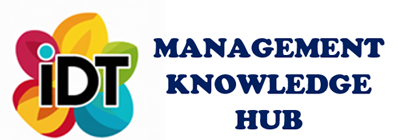Conflicts Management: Taming the Workplace Storm
It’s a fact that conflicts arise. Disagreements, differences in viewpoints, and even personality conflicts are unavoidable in the fast-paced workplace. The fact is, confrontation doesn’t always have to be harmful. Quite the contrary—it can serve as a catalyst for creativity, advancement, and improved teamwork. It sounds a little boring to think of a team where everyone just agrees all the time, doesn’t it?
The management of conflicts holds the key. I’m here to share some tried-and-true dispute resolution techniques with you as a management enthusiast.
The Significance of Conflict Resolution
Any workplace that involves collaboration is bound to include conflict. Everybody has a unique background, set of experiences, and viewpoints. Occasionally, these disparities may give rise to arguments. The favorable tidings? As a team, you can gain from effectively managing conflict.
A Double-Edged Sword in Conflict
On the other hand, unresolved disagreement can be quite harmful. It can undermine trust, obstruct development, and produce a hostile and unproductive work environment. Imagine it as a boiling pot on the stove; it will ultimately boil over and make a mess.
Differentiating the Types of Conflict
Not every dispute is equal. There are three primary categories to be aware of:
- Task-Based Conflict: This occurs when members of the team cannot agree on methods, schedules, or objectives. Instead of personalities, it’s a collision of ideas. Think of a marketing team discussing which approach to use on a brand-new campaign.
- Conflict Based on Personality: This occurs when different working styles collide. Perhaps your more carefree buddy gets along poorly with a detail-oriented coworker. It’s about figuring out how various styles can coexist.
- Value-Based Conflict: This is the result of conflicting core beliefs. It could be an ethical conundrum, or individuals of the team have radically different priorities. Although navigating these can be more difficult, open communication is essential.
Successful Techniques for Handling Conflict
So, when a conflict does emerge, how do you actually handle it? Here’s a methodical approach:
Step 1: Determine the primary cause: Avoid drawing hasty conclusions. Have a calm conversation with all parties concerned to determine the cause of the problem.
Step 2: Promote open communication: Provide a safe and courteous space for everyone to express their opinions and concerns.
Step 3: Empathy and active listening: Engage in active listening, summarize what you hear, and make an effort to comprehend the perspectives of others.
Step 4: Don’t focus on blame-placing: Instead, find solutions: Replace the emphasis on right and wrong with cooperative problem-solving.
Step 5: Look for compromise and common ground: Is it possible for both sides to come to a compromise that solves their issues?
Step 6: When all else fails: mediation or facilitation: In certain situations, a third party who is impartial can assist in mediating disputes and facilitating communication.
Proactive Techniques for Avoiding Conflict
The key to success is to avert conflict before it arises. How to do it is as follows:
- Developing a culture of communication and respect: Establish a setting where everyone is made to feel important and heard. Encourage honest and open communication even in the face of difficulty.
- Promoting open and sincere feedback: Encourage a positive feedback culture. Potential problems can be avoided early on with regular check-ins and open communication.
- Clearly defining roles, duties, and deadlines will help you set clear expectations and boundaries. This reduces uncertainty and makes it clearer to team members what is expected of them.
The Advantages of Successful Conflict Settlement
Maintaining harmony isn’t the only goal of conflict management; it can also be a useful instrument for development and creativity. How to do it is as follows:
- Encouraging innovation and creativity: Inspiring discussions can ignite creativity and produce novel solutions.
- Building cohesion and relationships: Courteous dispute resolution builds relationships and team spirit.
- Better problem-solving and decision-making: Teams are able to come up with more creative solutions and make more informed judgments when they engage in candid discussion of various points of view.
Conflict Management: An Essential Leadership Skill
Effective conflict management is an essential skill for anyone in a leadership position. By implementing these techniques and encouraging a climate of open communication, you may establish a workplace where people view conflict as a chance for development rather than as a barrier to achievement.
FAQs
1. What happens if someone becomes extremely upset during a disagreement?
Remain detached and give everyone time to calm down before picking up the subject again. When everyone can approach the problem with composure and reason, it’s the right situation to confront it.
2. What are some appropriate terms to employ in dispute mediation?
“Can you tell me more about what’s bothering you?” (proposes candid conversation)
“Let’s see if we can find some common ground here.” (turns attention to solutions)
“How do you see this situation being resolved?” (Gives teammates more power)
3. When is it appropriate to end a disagreement?
If tensions are rising and constructive dialogue is unattainable, it is acceptable to temporarily end the conversation and pick it up later
4. How can I put these conflict resolution techniques into practice right now?
Consider your personal communication style and conflict resolution methods first. Engage in daily interactions by practicing empathy and active listening. Always keep in mind that preventing and resolving conflict depends on effective communication.
5. Where can I find more information about dispute resolution?
Online courses, journals, and publications devoted to dispute resolution abound. Think about going to seminars or getting training on the subject.
—————–
Transparency Disclosure: This article was generated with Gemini AI assistance in the research and outlining but with comprehensive editing, refining and fact-checking by the author to ensure accuracy and high-quality content.




